Photo essay for the Special Initiative “From Fear to Resilience: Visual Storytelling of COVID-19 in Southeast Asia” by SEA Junction and Partners
| Title: | Sacred and Secular Sanitizing: Handwashing Stations Spring up in Bali |
| Storyteller/Photographer: | Garrett Kam |
| Place: | Bali, Indonesia |
| Time: | May-August 2020 |
On the island of Bali in Indonesia, most villagers pump household ground water from a well up into an elevated storage tank. Gravity brings it flowing back to earth through a system of fixed pipes to kitchen, toilet, and yard faucets.
When COVID-19 arrived, the Balinese took measures to ensure they could follow the health protocol to wash their hands when outside their homes. In a rush, water containers of all sizes and colours were installed all over the island.
The simplest setup consisted of just a bucket and soap dispenser at a faucet. Most, however, included also water containers of some sort. The technique employed was simple: a hole was drilled on the side near the base of a large plastic container with lid. A plastic faucet was inserted and sealed in place with silicon. This outfitted container was then placed on a low stand or wall at knee level with a small bucket placed below the faucet to catch waste water. The container was filled with water, closed, and a bottle of liquid soap (often a small plastic drink bottle with a nail hole punctured in the cap) placed on the lid with a box of tissues, and next to it on the ground a trash can to discard used ones.
The setup was similar for all water containers, but people had plenty of choices with regards to materials and colours. Small roadside stalls made simple setups while convenience stores had more elaborate ones. Supermarkets had fancy large versions or portable sinks.
Even temples set up multiple washing stations at their gates to accommodate more people, with no more than 25 allowed in at a time during limited hours. Everyone is required to wear a mask and keep safe praying distance in spaces marked with red adhesive tape.
With these practical low-cost solutions, Balinese communities and individuals, aim to control the spreading of COVID-19 and limit the disruption to their daily life in a way that satisfy both public health requirements and social needs.
Storyteller/Photographer:
Garrett Kam is from Hawaii in the USA but has been living in Bali in Indonesia since 1987 when he received a Fulbright grant to research ritual art. He has curated exhibitions of Indonesian art and authored many essays, articles, catalogues, and books including “Ramayana in the Arts of Asia”.
A trained classical Javanese dancer since 1975, Garrett continue to participate in dance activities in the palace of Yogyakarta. He has performed and taught across Asia and the USA and most recently in 2017-18 was artist-in-residence at the dance department of Chulalongkorn University.
Garrett has been active in programs at SEA Junction including dance performances, workshops, special talks, and a book launch. His visual essay on Balinese offerings and rituals to avert the pandemic started this special initiative “From Fear to Resilience: Visual Storytelling on COVID-19 in Southeast Asia” to be seen at http://seajunction.org/spiritual-shield-against-covid-19-in-bali/#.Xzo6zS9h3BI. He also has compiled other artistic reactions and adaptations to the pandemic in Bali and Java in the Facebook open community page Nasi Wong-wongan.
Organizers
“From Fear to Resilience: Visual Storytelling of COVID-19 in Southeast Asia” is a special initiative of SEA Junction and its partners Beyond Food, GAATW and Bangkok Tribune to promote an alternative narrative of survival, resilience and solidarity. For more background and other stories klick here.

The simplest setup with just a bucket and soap dispenser at a faucet (Photo by Garrett Kam).
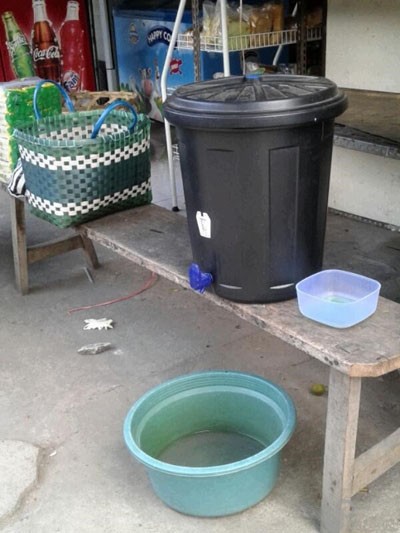
Bucket on a bench outside a village shop. (Photo by Garrett Kam)
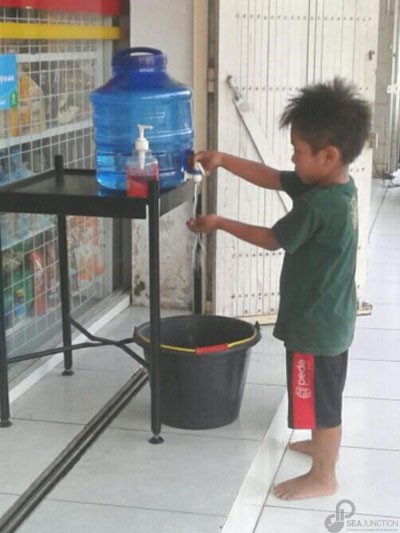
A boy washes his hands outside a convenience store. (Photo by Garrett Kam)
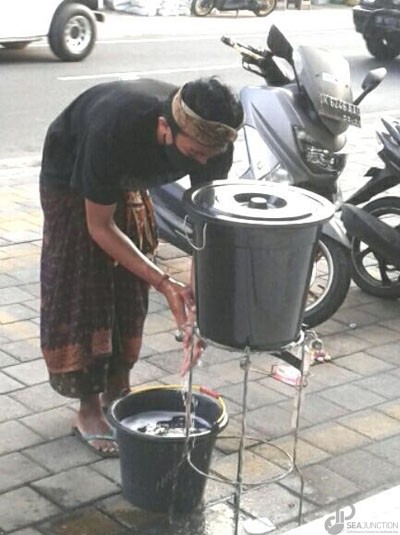
A youth dressed for a ceremony washes before entering a mini-mart. (Photo by Garrett Kam)
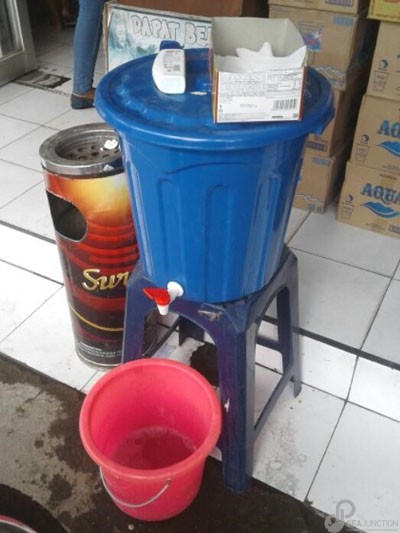
Put out the cigarette and wash your hands before entering the mini mart. (Photo by Garrett Kam)
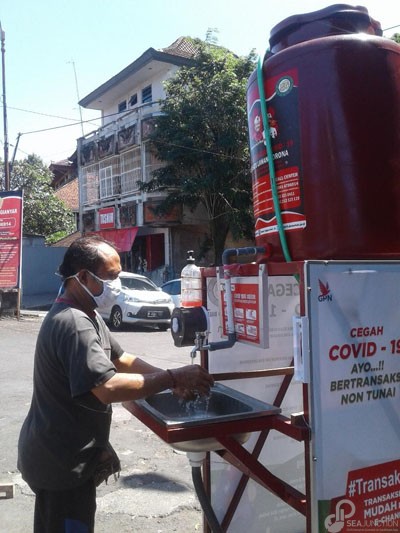
A large water tank washing station in a parking lot. (Photo by Garrett Kam)
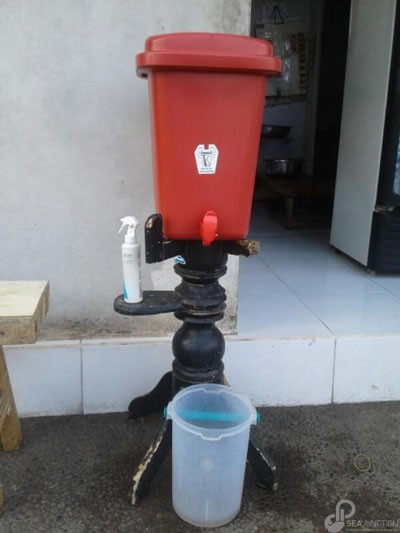
Old water container stand put to new use. (Photo by Garrett Kam)
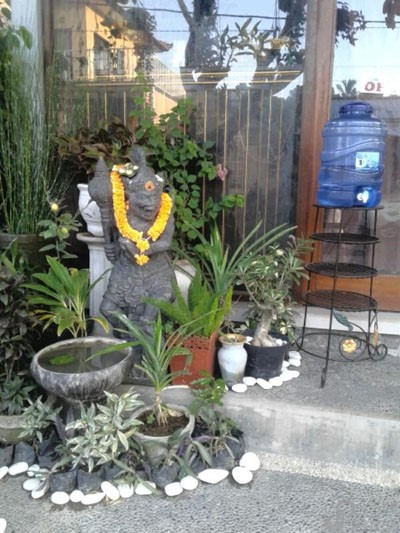
Garlanded monkey warrior Hanoman amid potted plants guards a washing station at a beauty salon. (Photo by Garrett Kam)
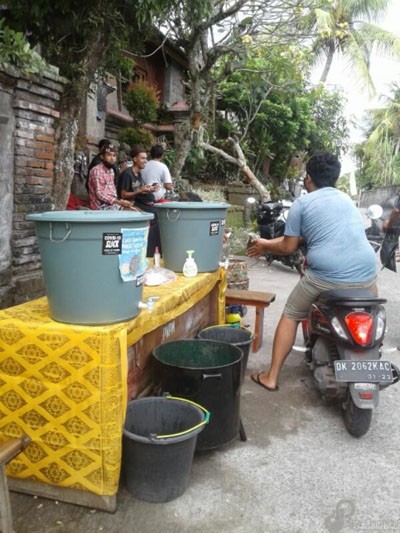
Washing while sitting on a motorbike to enter a village lane. (Photo by Garrett Kam)
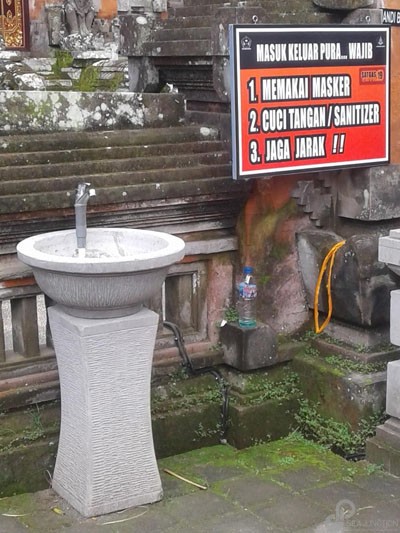
Newly installed sink outside a temple. Sign says “To enter the temple one must 1) wear a mask, 2) wash/sanitize hands, 3) keep a safe distance. (Photo by Garrett Kam)
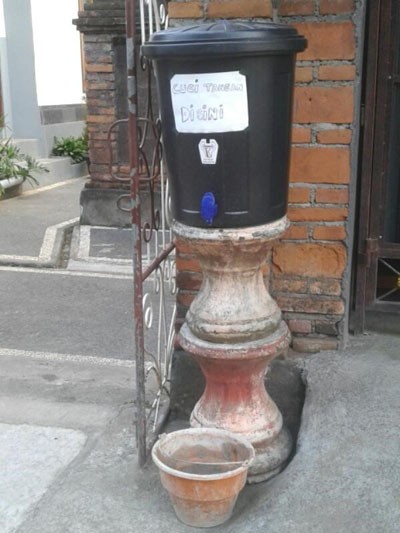
“Wash hands here’ on some stacked seats. (Photo by Garrett Kam)
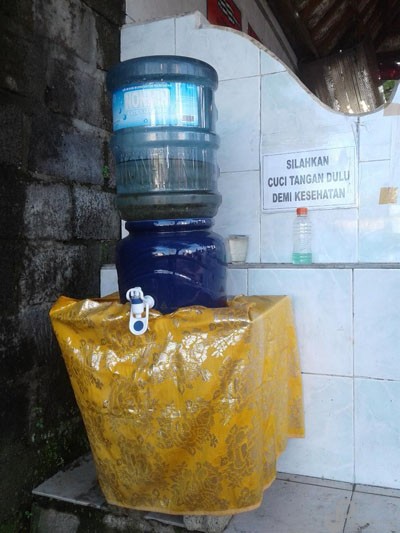
Balinese touch with gold-leafed cloth at a security post station. As the sign says “Wash your hands for your health”. (Photo by Garrett Kam)

Temperature check before entering a temple. (Photo by Garrett Kam)
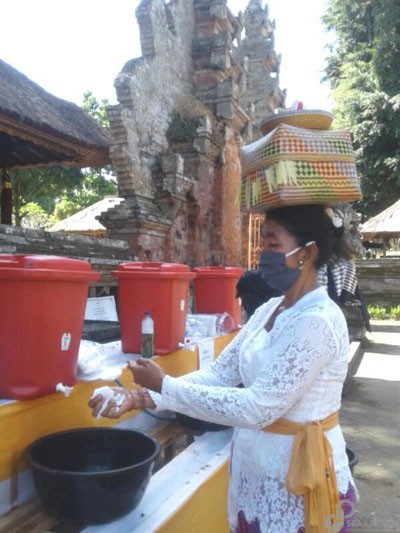
Balancing an offering while washing before entering a temple. (Photo by Garrett Kam)
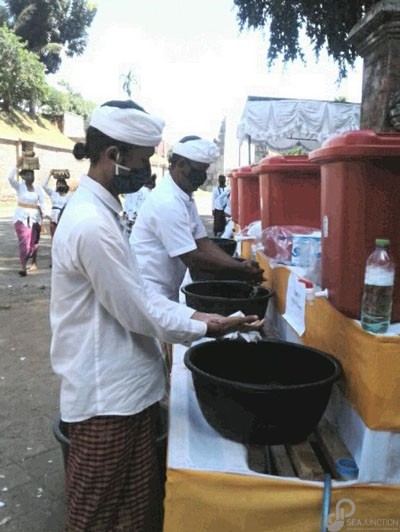
Worshipers arrive and wash their hands. (Photo by Garrett Kam)
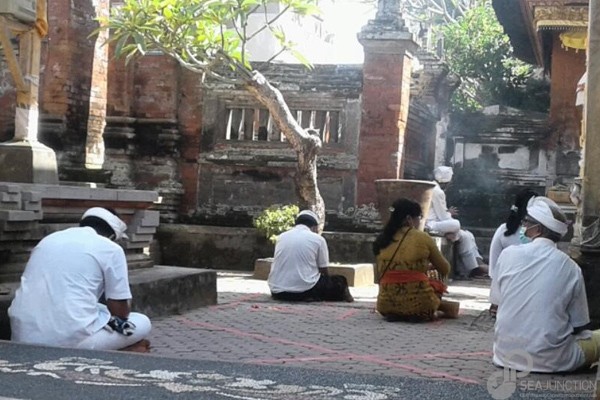
Red duct tape marks spaces to pray. (Photo by Garrett Kam)
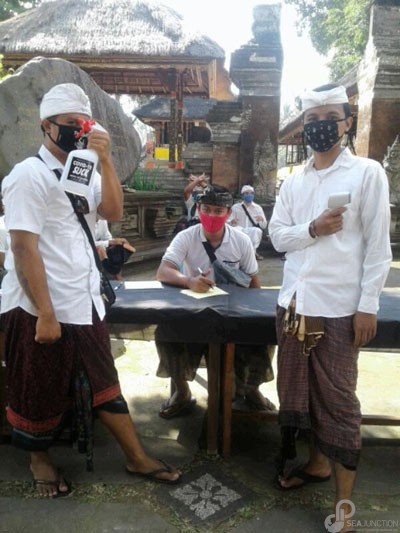
As the sticker says it: “COVID-19 Suck[s]”. (Photo by Garrett Kam)


